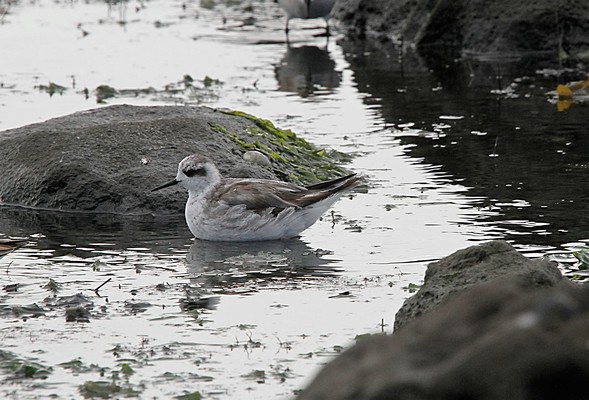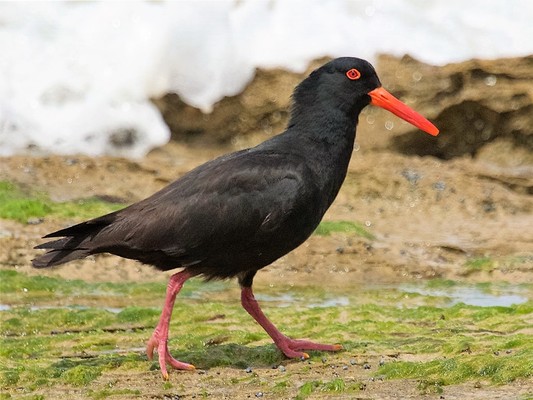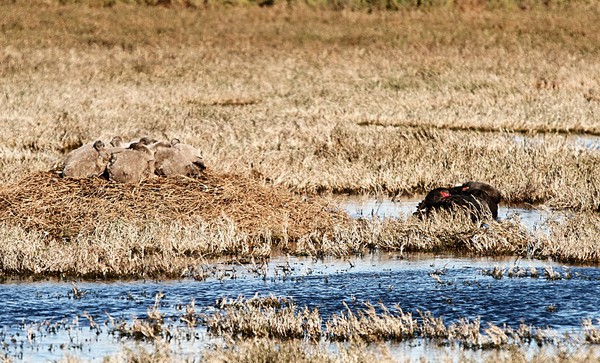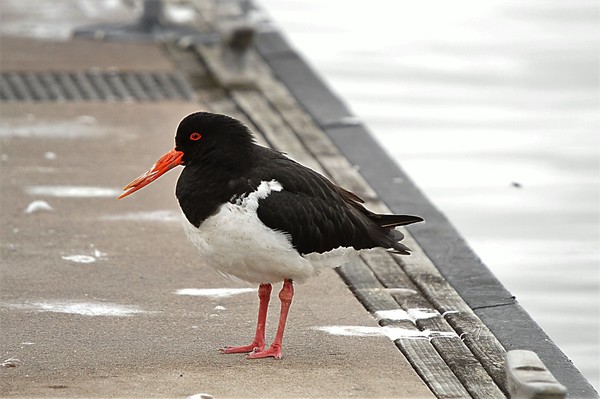I’VE been on a quest during the past few weeks to photograph a red-necked phalarope (RNP).
I read on ’Birdline Victoria’ on 22 October that a phalarope had been seen at Kirk’s Point, near the Western Treatment Plant. I saw the red-necked phalarope that appeared at the Western Treatment Plant last summer, but it was always a long way from view, so my photos were ordinary. The phalarope that was seen on 22 October was very close to the shoreline, thus potential promising photo opportunities awaited.
The red-necked phalarope is the smallest of the three species of phalarope found in the world. This species has a length of 18cm-19cm and a wingspan of 31cm-34cm.
The breeding female has a red/chestnut coloured neck, hence the name.
The RNP has a small head, slender neck, a short straight bill, short legs and feet with lobed toes (extra lobes of skin on the toes that expand and contract to aid with swimming). It is unusual for waders to have lobed digits, but in the case of a phalarope they need to be good swimmers because when feeding they will often swim in a small, rapid circle, forming a small eddy, which raises food from the bottom of shallow water. Then with the small bill the birds pluck small insects or crustaceans out of the water.
Red-necked phalaropes breed in the Arctic regions of North America and Eurasia. In the northern winter the birds migrate to warmer climates, and phalaropes are usually seen at sea on tropical oceans.
This species of bird is a vagrant in Australia (which means that it is outside it’s usual range). Red-necked phalaropes were not recorded in Australia until 1962 and since then there have been a total of 34 sightings of 89 individuals around Australia, but mainly in the south, so it is not a bird that is commonly seen.
Last week I went to the WTP three times in an effort to see the red-necked phalarope, to no avail.
On Melbourne Cup Day I thought I would try one last time, and I was very lucky to meet two English gentlemen names Giles and Clive who had just spotted the phalarope, and they pointed me in the right direction.
Sure enough I saw this small bird that was swimming around and around in circles, stirring the water up, and then dipping it’s beak in the water to feed. I watched the bird for a good half an hour. The dull conditions meant that my photos were not great, but it was a lovely experience to have a close encounter with a ’rare bird’.
On Melbourne Cup Eve I thought I would check out a family of tawny frogmouths that I know about on the Bellarine.
The previous night had been very windy, and sure enough when I checked out the nest there was only one chick in the nest rather than two. I looked on the ground and found a chick right next to the gum tree base, trying (very successfully) to blend into its surroundings. The chick was very lucky to be alive, as many dogs walk around the area.
There was no way known I was going to be able to return the bird to the nest, which is a good four or five metres off the ground. I knew where the mother bird was resting during the day, so with the help of a passing tall man, we placed the chick in the same tree as the mum, thinking that it could use its strong legs to climb to it’s mother.
I went back the next day and the mother bird and chick were nowhere to be found, so I can only hope that they are well concealed in a sheltered spot together. Time will tell.
I’ve seen young tawnies leave the nest and negotiate branches, so I have great faith that it will be OK.
Strong winds play havoc with shorebirds, young possums and other nesting creatures this time of year.
Speaking of young birds, the black swans of the Bellarine have had a bumper breeding year, with all of the water around. It’s been great to watch families with cygnets survive so successfully. The photo included with this article was taken at Breamlea, where the cygnets were sleeping on their nest and the parents staying guard in the water.
I received an email from Kevin, who took the wonderful photo of a sooty oystercatcher at Point Lonsdale. I have included a photo I took of a pied oystercatcher taken on the Ocean Grove boat ramp in the Barwon River estuary. I was concerned that the pied oystercatcher had a very damaged top beak. Maybe it’s just an old bird and it’s beak has been well used.
I would also ask that people keep their dogs under control around waterways, to give birds a better chance of survival. I’ve seen several people let their dogs off the lead at Hoburn Rise Basin in Ocean Grove.
In the reeds there are several newly hatched ducks and purple swamphens. Please keep dogs on the lead and look after the animals and birds that live in these areas.
It’s nearly hooded plover breeding season so the beach dog walking restrictions will commence soon.
– Jen Carr, jennifer.carr6@bigpond.com










